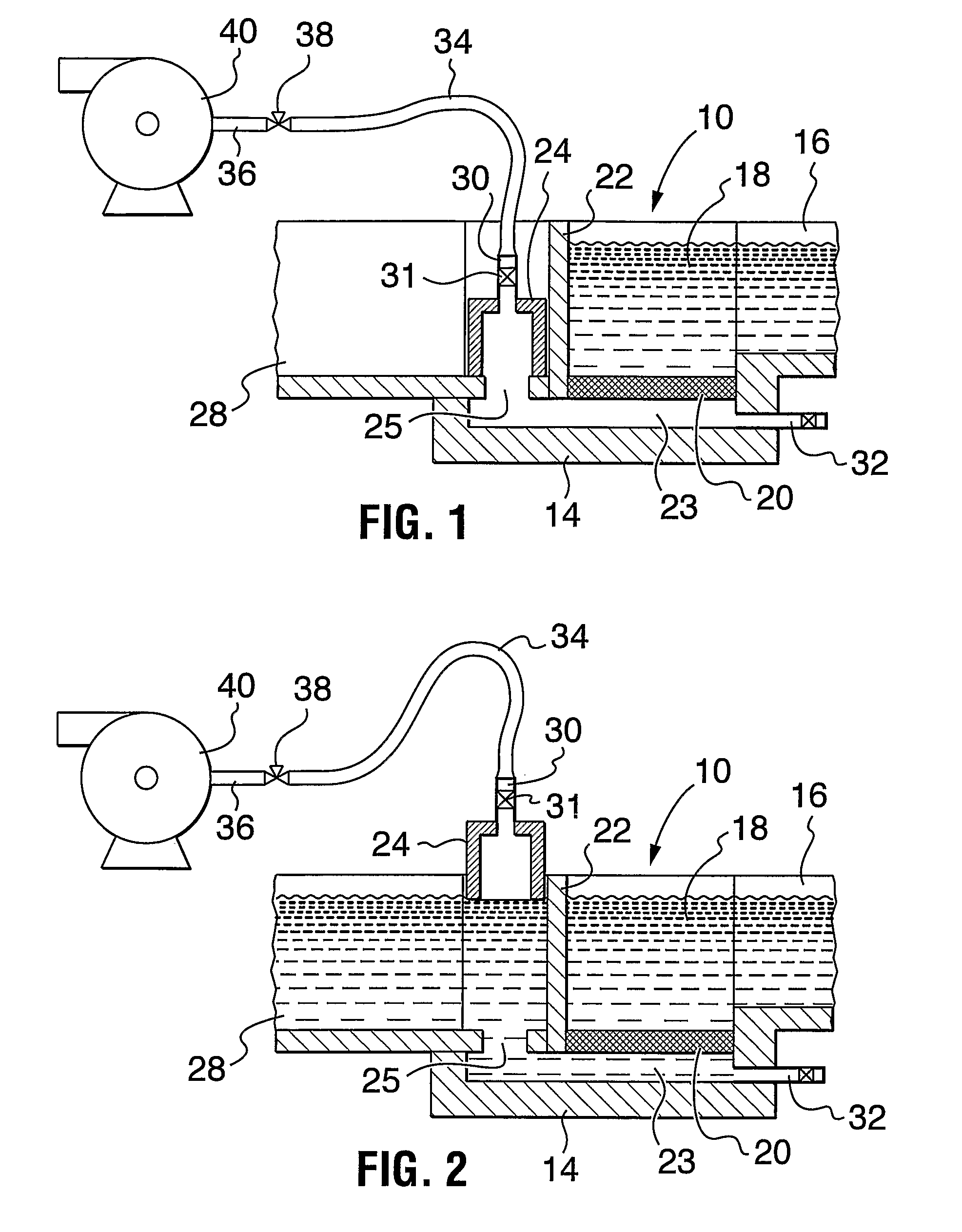Method of priming filter for molten metal
a technology of molten metal and filter, which is applied in the direction of heat treatment apparatus, furnaces, and separation processes, can solve the problems of insufficient suction, insufficient vacuum, and fan operation, and achieve the effect of releasing the vacuum quickly and leveling the vacuum without any overrun
- Summary
- Abstract
- Description
- Claims
- Application Information
AI Technical Summary
Benefits of technology
Problems solved by technology
Method used
Image
Examples
example 1
[0043]A test was conducted on a pilot filtration unit of a design as shown in FIG. 1. The filter used was a commercially available filter having a pore density of 70 pores per inch (PPI). It had a thickness of 5.1 cm (2 inches) and a cross-sectional area of 929 square centimeters (144 square inches). The exit well was connected by way of a conduit to the intake of a duct fan (Spencer VB-055 manufactured by The Spencer Turbine Company, Windsor, Conn. USA), the conduit including a venting valve and a three-way valve for bleeding atmospheric air into the air being drawn into the fan.
[0044]Molten aluminum alloy was added to the filtration unit to a depth of about 20 cm (8 inches) above the filter. With the exit well and molten metal outlet trough closed, the fan was started and a three-way valve progressively moved by a motor to draw an increasing proportion of air from the exit well and a decreasing proportion of air from the atmosphere. The filter is primed within about 10 seconds, at...
PUM
| Property | Measurement | Unit |
|---|---|---|
| time | aaaaa | aaaaa |
| time | aaaaa | aaaaa |
| area | aaaaa | aaaaa |
Abstract
Description
Claims
Application Information
 Login to View More
Login to View More - R&D
- Intellectual Property
- Life Sciences
- Materials
- Tech Scout
- Unparalleled Data Quality
- Higher Quality Content
- 60% Fewer Hallucinations
Browse by: Latest US Patents, China's latest patents, Technical Efficacy Thesaurus, Application Domain, Technology Topic, Popular Technical Reports.
© 2025 PatSnap. All rights reserved.Legal|Privacy policy|Modern Slavery Act Transparency Statement|Sitemap|About US| Contact US: help@patsnap.com



